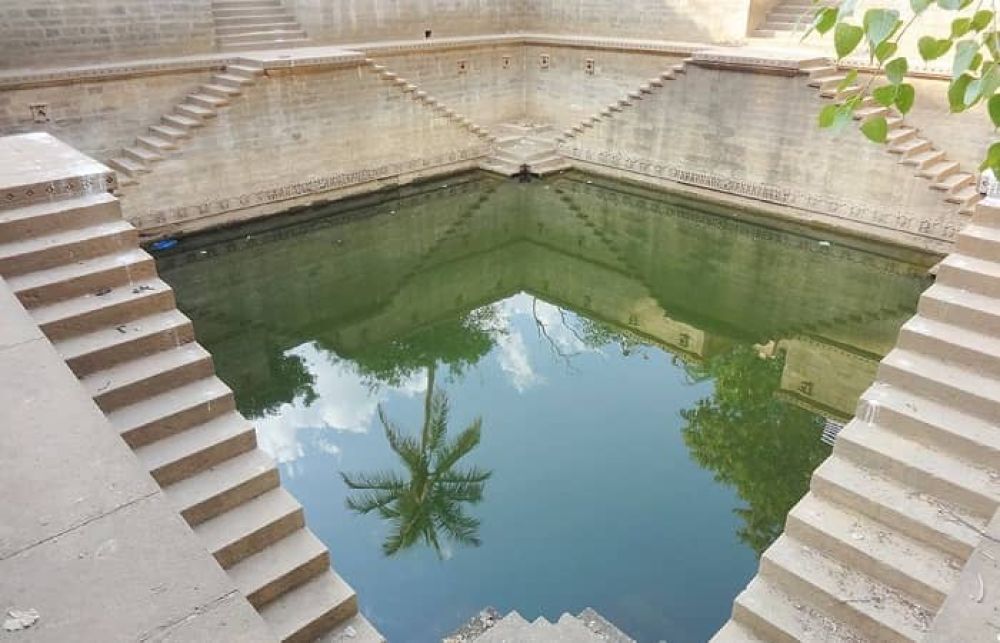

The Ramkund Stepwell, located in Bhuj of the Kutch region in Gujarat, India, is a magnificent example of the stepwell architecture that is prevalent in Western India. These stepwells, also known as 'vavs', are unique to this region and served multifaceted purposes: providing water, offering respite from the heat, and serving as venues for communal gatherings and cultural activities.
Constructed in the 18th century, the Ramkund Stepwell is a relatively newer addition to the long tradition of stepwells in Gujarat. The arid region of Kutch has always challenged its inhabitants with water scarcity, and stepwells like Ramkund were innovative solutions to the problem. These structures not only stored water but also became deeply entwined with the local communities' daily lives and their religious and cultural expressions.
The architecture of the Ramkund Stepwell boasts intricate stone carvings and geometrically precise steps that lead down to the water level. The stepwell has also been associated with the local folklore and legends of the region, adding a layer of mythological significance to its existence.
In the past, sites like the Ramkund Stepwell were primarily utilitarian and only frequented by locals. However, with the growing interest in heritage and cultural tourism, these ancient structures have piqued the curiosity of travelers worldwide. The unique blend of functionality, architecture, and cultural heritage makes these stepwells, including Ramkund, fascinating destinations.
The tourism history of Ramkund Stepwell started to flourish more significantly after the devastating earthquake that hit the Kutch region in 2001. The subsequent reconstruction efforts brought a renewed focus on the preservation of local heritage, including various historical sites like Ramkund Stepwell. This brought them to the attention of not only national but international tourists as well.
In recent years, the Government of Gujarat has been actively promoting the state as a tourist destination, with a special emphasis on its historical and cultural sites. Festivals like Rann Utsav have successfully attracted tourists to the region, thereby boosting visits to sites like the Ramkund Stepwell.
The latest trend in tourism at the Ramkund Stepwell involves immersive experiences that include guided tours explaining the history and significance of the structure, local arts and craft demonstrations, and even photography tours taking advantage of the stepwell's aesthetic and architectural beauty.
Moreover, sustainable tourism practices are being encouraged to preserve the stepwell's integrity. Efforts are being made to educate visitors on the importance of conservation while ensuring that local communities benefit from the influx of tourists.
In conclusion, the Ramkund Stepwell in Bhuj is a shining example of Gujarat’s rich stepwell heritage. Though it began as a functional necessity, turned cultural hub, it has grown into a site of considerable interest for both national and international tourists, who find value in its history, architecture, and the stories embedded within its walls.